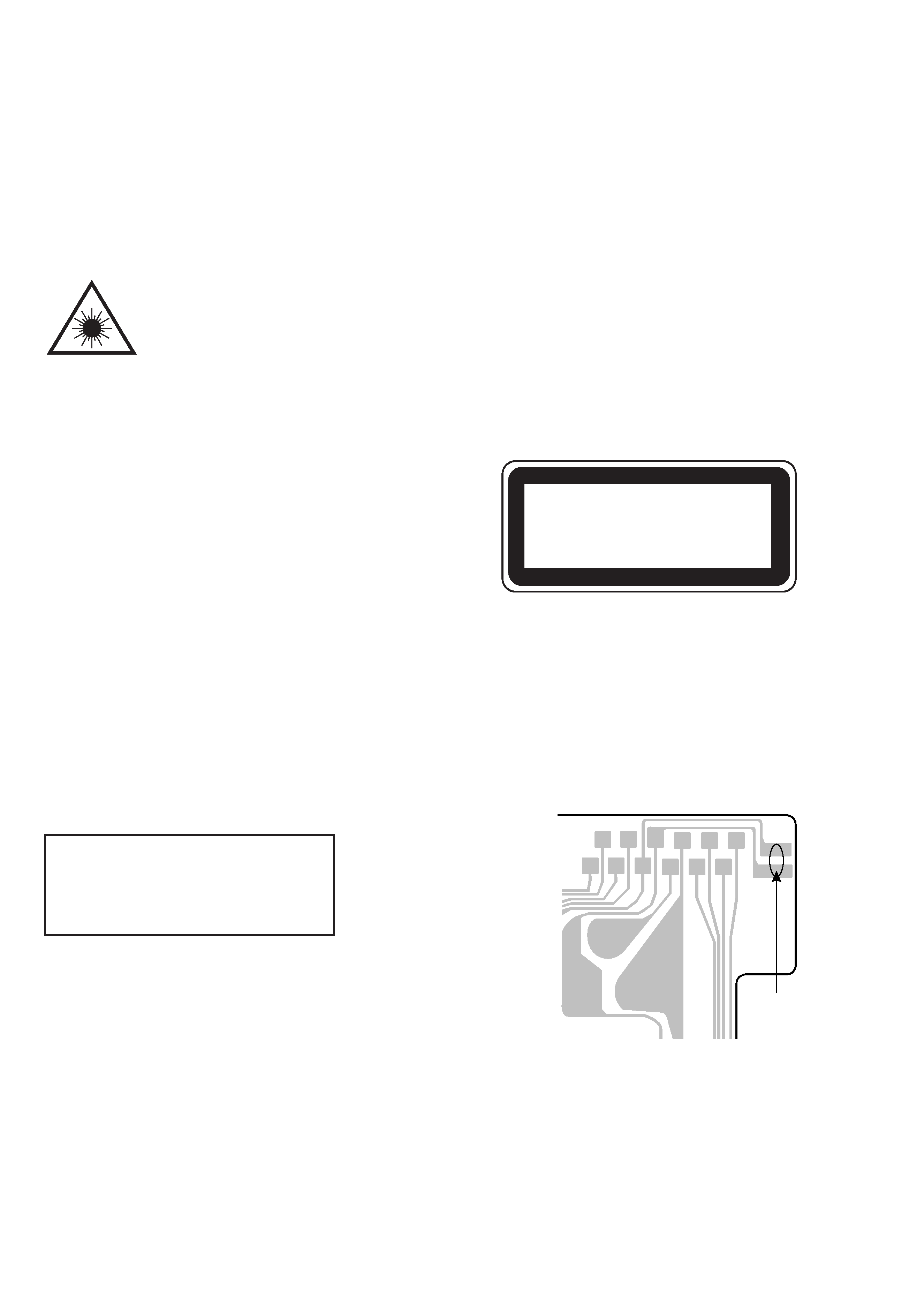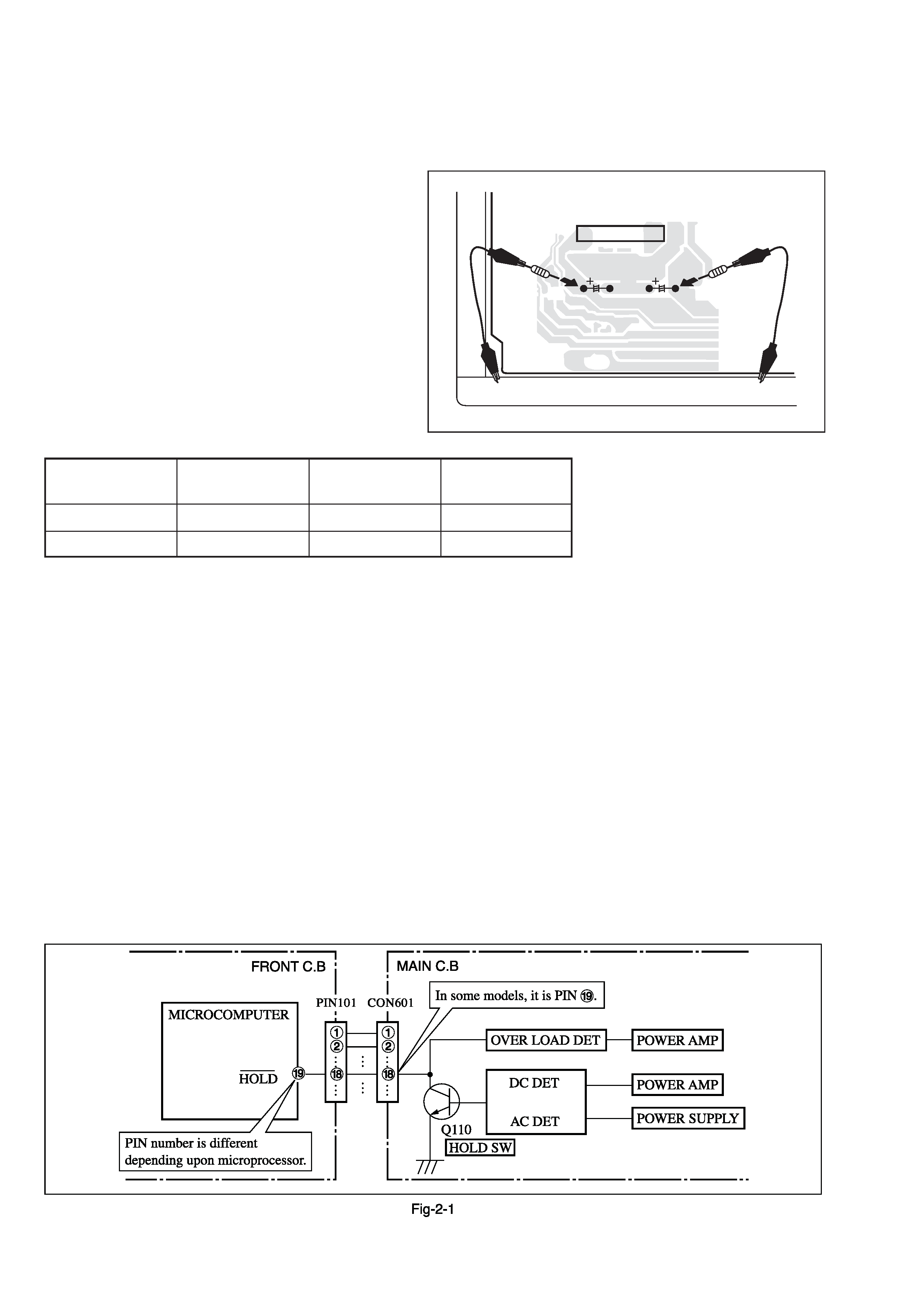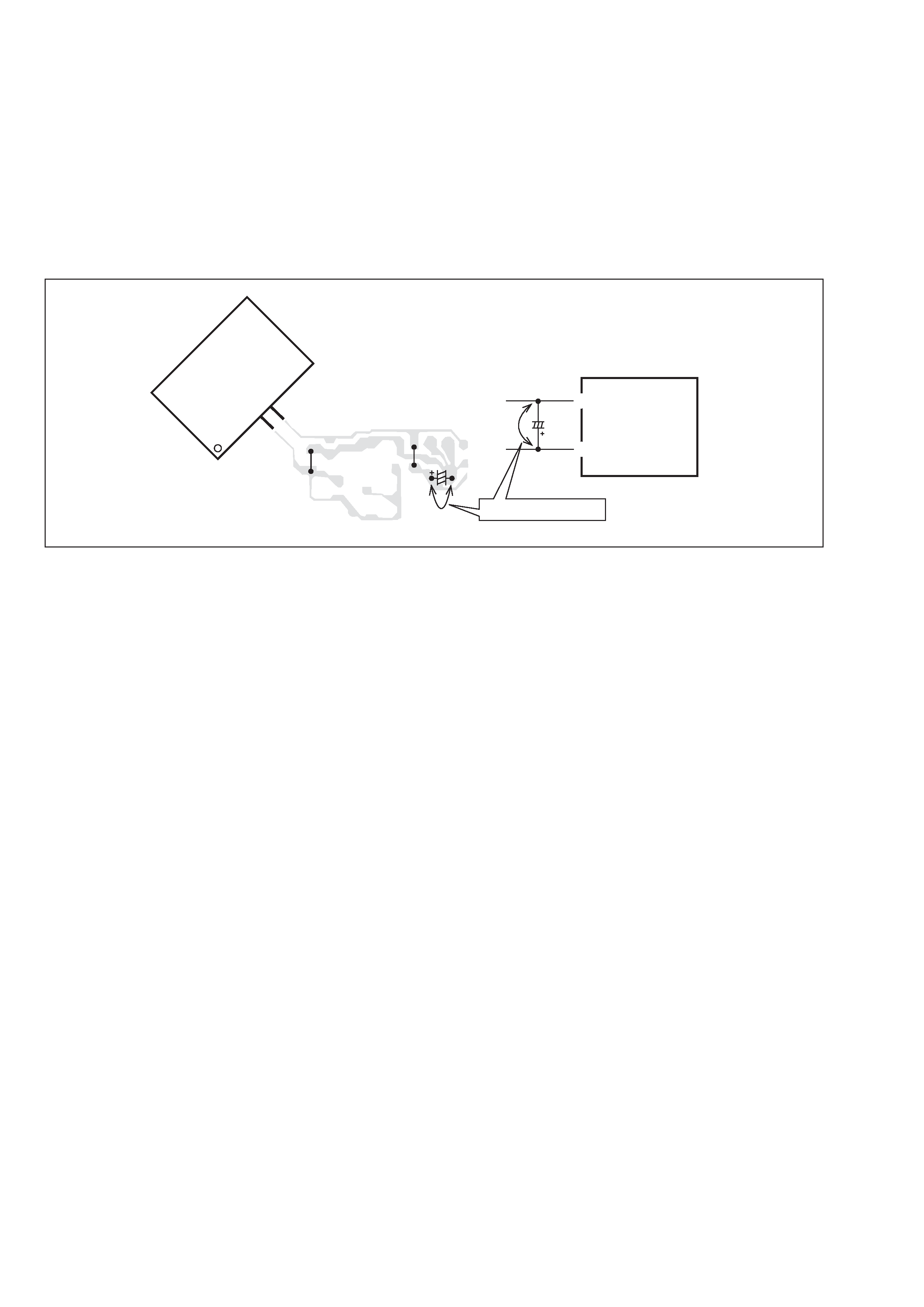
SERVICE MANUAL
DA
TA
COMPACT DISC STEREO
CASSETTE RECEIVER
BASIC TAPE MECHANISM : ZZM-3 PR1NM
BASIC CD MECHANISM : 6ZG-1 ZRDM
Z-L500
K, EZ
S/M Code No. 09-003-424-0R2
REVISION
· This Service Manual is the "Revision Publishing" and replaces "Simple Manual"
Z-L500 (K, EZ), (S/M Code No. 09-002-424-0T2).
· If requiring information about the CD mechanism, see Service Manual of
6ZG-1, (S/M Code No. 09-001-338-7N2).
· If requiring information about the Stereo Turntable, see Service Manual of
PX-E860 (K), (S/M Code No. 09-993-322-0R4).
ZL500 (EZ)
SPEAKER
SYSTEM
CD
CASSEIVER
SXWZL500
CXZL500
REMOTE
CONTROLLER
ZL500 (K)
RCZAS02
PXE860
STEREO
TURNTABLE

2
SPECIFICATIONS
<FM tuner section>
Tuning range
87.5 MHz to 108 MHz
Usable sensitivity (IHF)
13.2 dBf
Antenna terminals
75 ohms (unbalanced)
<MW tuner section>
Tuning range
530 kHz to 1710 kHz (10 kHz step)
531 kHz to 1602 kHz (9 kHz step)
Usable sensitivity
350
µV/m
Antenna
Loop antenna
<LW tuner section>
Tuning range
144 kHz to 290 kHz
Usable sensitivity
1400
µV/m
Antenna
Loop antenna
<Amplifier section>
Mid-high frequency amplifier
Power output
Rated: 20 W + 20 W (8 ohms,
T.H.D. 1 %, 1 kHz)
Reference: 25 W + 25 W (8 ohms,
T.H.D. 10 %, 1 kHz)
EZ:
DIN MUSIC POWER: 45 W + 45W
Total harmonic distortion
0.15 % (10 W, 1 kHz, 8 ohms, DIN
AUDIO<EZ only>)
Low frequency amplifier
Power output
Rated: 60 W + 60 W (6 ohms,
T.H.D. 1 %, 75 Hz)
Reference : 75 W + 75 W (6 ohms,
T.H.D. 10 %, 75 Hz)
EZ:
DIN MUSIC POWER: 135 W + 135W
Total harmonic distortion
0.15 % (30 W, 75 Hz, 6 ohms, DIN
AUDIO<EZ only>)
Inputs
VIDEO/AUX/PHONO IN: 500 mV
Outputs
CD DIGITAL OUT (OPTICAL)
SPEAKERS HIGH FREQ:
accept speakers of 8 ohms or more
SPEAKERS LOW FREQ:
accept speakers of 6 ohms or more
PHONES (stereo jack):
accepts headphones of 32 ohms or
more
<Cassette deck section>
Track format
4 tracks, 2 channels stereo
Frequency response
50 Hz 12500 Hz
Recording system
AC bias
Heads
Deck 1 : Playback head x 1
Deck 2 : Recording/Playback head
x 1, erase head x 1
<Compact disc player section>
Laser
Semiconductor laser (
=780 nm)
D-A converter
1 bit dual
Signal-to-noise ratio
85 dB (1 kHz, 0 dB)
Harmonic distortion
0.05 % (1 kHz, 0 dB)
Wow and flutter
Unmeasurable
<Speaker system SXWZL500>
Cabinet type
3 way, built-in subwoofer
Speakers
Subwoofer:
220 mm (83/
4 in.) cone type
Full range:
120 mm (43/
4 in.) cone type
Super tweeter:
20 mm (13/
16 in.) ceramic type
Impedance
6 ohms/8 ohms
Output sound pressure level 89 dB/W/m
Dimensions (W x H x D)
260 x 495x 261 mm
(101/
4 x 19
1/
2 x 10
3/
8 in.)
Weight
5.8 kg (12 lbs. 14 oz.)
<General>
Power requirements
230 V AC, 50 Hz
Power consumption
150 W
Dimensions of main unit
360 x 395.3 x 385.1 mm
(W x H x D)
(141/
4 x 15
5/
8 x 15
1/
4 in.)
Weight of main unit
10.9 kg (24 lbs.)
· Design and specifications are subject to change without notice.
· The word "BBE"and the "BBE symbol" are trademarks of BBE
Sound, Inc.
Under license from BBE Sound,Inc.

3
CLASS 1
LASER PRODUCT
KLASSE 1
LASER PRODUKT
LUOKAN 1
LASER LAITE
KLASS 1
LASER APPARAT
This set employs laser. Therefore, be sure to follow carefully
the instructions below when servicing.
WARNING!!
WHEN SERVICING, DO NOT APPROACH THE LASER
EXIT WITH THE EYE TOO CLOSELY. IN CASE IT IS
NECESSARY TO CONFIRM LASER BEAM EMISSION.
BE SURE TO OBSERVE FROM A DISTANCE OF MORE
THAN 30cm FROM THE SURFACE OF THE OBJEC-
TIVE LENS ON THE OPTICAL PICK-UP BLOCK.
s Caution: Invisible laser radiation when
open and interlocks defeated avoid
exposure to beam.
s Advarsel: Usynlig laserståling ved åbning,
når sikkerhedsafbrydere er ude af funktion.
Undgå udsættelse for stråling.
VAROITUS!
Laiteen Käyttäminen muulla kuin tässä käyttöohjeessa
mainitulla
tavalla
saataa
altistaa
käyt-täjän
turvallisuusluokan 1 ylittävälle näkymättömälle
lasersäteilylle.
VARNING!
Om apparaten används på annat sätt än vad som
specificeras i denna bruksanvising, kan användaren
utsättas för osynling laserstrålning, som överskrider
gränsen för laserklass 1.
PROTECTION OF EYES FROM LASER BEAM DURING SERVICING
CAUTION
Use of controls or adjustments or performance of proce-
dures other than those specified herin may result in
hazardous radiation exposure.
ATTENTION
L'utillisation de commandes, réglages ou procédures
autres que ceux spécifiés peut entraîner une dangereuse
exposition aux radiations.
ADVARSEL
Usynlig laserståling ved åbning, når sikkerhedsafbrydereer
ude af funktion. Undgå udsættelse for stråling.
This Compact Disc player is classified as a CLASS 1
LASER product.
The CLASS 1 LASER PRODUCT label is located on the
rear exterior.
Precaution to replace Optical block
(KSS-213F)
Body or clothes electrostatic potential could
ruin laser diode in the optical block. Be sure
ground body and workbench, and use care the
clothes do not touch the diode.
1) After the connection, remove solder shown in
right figure.
PICK-UP Assy P.C.B
Solder

4
NOTE ON BEFORE STARTING REPAIR
Charging voltage (V)
Discharging
Rated power (W)
Parts number
(C101, 102)
resistor (
)
25-48
100
3
87-A00-247-090
49-140
220
5
87-A00-232-090
Note: The reference numbers (C101, C102) of the electrolytic capacitors can change depending on the models. Be sure to check the
reference numbers of the charging capacitors on schematic diagram before starting the discharging work.
2. Check items before exchanging the MICROCOMPUTER
Be sure to check the following items before exchanging the MICROCOMPUTER. Exchange the MICROCOMPUTER after confirming
that the MICROCOMPUTER is surely defective.
2-1. Regarding the HOLD terminal of the MICROCOMPUTER
When the HOLD terminal (INPUT) of the MICROCOMPUTER is "H", the MICROCOMPUTER is judged to be operating correctly.
When this terminal is "L", the main power cannot be turned on. Therefore, be sure to check the terminal voltage of the HOLD
terminal before exchange.
When the MICROCOMPUTER is not defective, the HOLD terminal can also go "L" when the POWER AMPLIFIER has any
abnormalities that triggers the abnormality detection circuit on the MAIN C. B. that sets the HOLD terminal to "L".
· Good or no good judgement of the MICROCOMPUTER
1
1
1
1
1 Turn on the AC main power.
2
2
2
2
2 Confirm that the main power is turned on and the HOLD terminal of the MICROCOMPUTER keeps the "H" level or not.
3
3
3
3
3 When the HOLD terminal is "L" level, the abnormality detection circuit is judged to be working correctly and the
MICROCOMPUTER is judged to be good.
1. Forced discharge of electrolytic capacitor of power supply block
When repair is going to be attempted in the set that uses relay circuit in the power supply block, electric potential is kept charged across
the electrolytic capacitors (C101, 102) even though AC power cord is removed. If repair is attempted in this condition, secondary defect
can occur.
In order to prevent the secondary trouble, perform the following measures before starting repair work.
Discharge procedure
1
1
1
1
1 Remove the AC power cord.
2
2
2
2
2 Connect a discharging resistor at an end of lead wire that
has clips at both ends. Connect the other end of the lead
wire to metal chassis.
3
3
3
3
3 Contact the other end of the discharging resistor to the
positive (+) side (+VH) of C101. (For two seconds)
4
4
4
4
4 Contact the same end of the discharging resistor as step
3
3
3
3
3 to the negative (-) side (-VH) of C102 in the same way.
(For two seconds)
5
5
5
5
5 Check that voltage across C101 and C102 has decreased
to 1 V or less using a multimeter or an oscilloscope.
Select a discharging resistor referring to the following table.
Fig-1
MAIN C.B
D101
C101
C102
22
3
4

5
In such a case, check also if the POWER AMPLIFIER circuit or power supply circuit has any abnormalities or not.
2-2. Regarding reset
There are cases that the machine does not work correctly because the MICROCOMPUTER is not reset even though the AC power
cord is re-inserted, or the software reset (pressing the STOP key + POWER key) is performed.
When the above described phenomenon occurs, it can lead to wrong judgement as if the MICROCOMPUTER is defective and to
exchange the MICROCOMPUTER. In such a case, perform the forced-reset by the following procedure and check good or no
good of the MICROCOMPUTER.
1
1
1
1
1 Remove the AC power cord.
2
2
2
2
2 Short both ends of the electrolytic capacitor C113 that is connected to VDD of the MICROCOMPUTER with tweezers.
3
3
3
3
3 Connect the AC power cord again. If the MICROCOMPUTER returns to the normal operation, the MICROCOMPUTER is
good.
Note: The reference number or MICROCOMPUTER pin number of transistor (Q110) and electrolytic capacitor (C113) can change depending
on the models. Be sure to check the reference numbers on schematic diagram before starting the discharging work.
2-3. Confirmation of soldering state of MICROCOMPUTER
Check the soldering state of the MICROCOMPUTER in addition to the above described procedures. Be sure to exchange the
MICROCOMPUTER after surely confirming that the trouble is not caused by poor soldering but the MICROCOMPUTER itself.
Fig-2-2
MICRO-
COMPUTER
MICR
OCOMPUTER
FRONT C.B
FRONT C.B
VSS
VDD
C113
*
%
C113
18
15
Short with tweezers.
